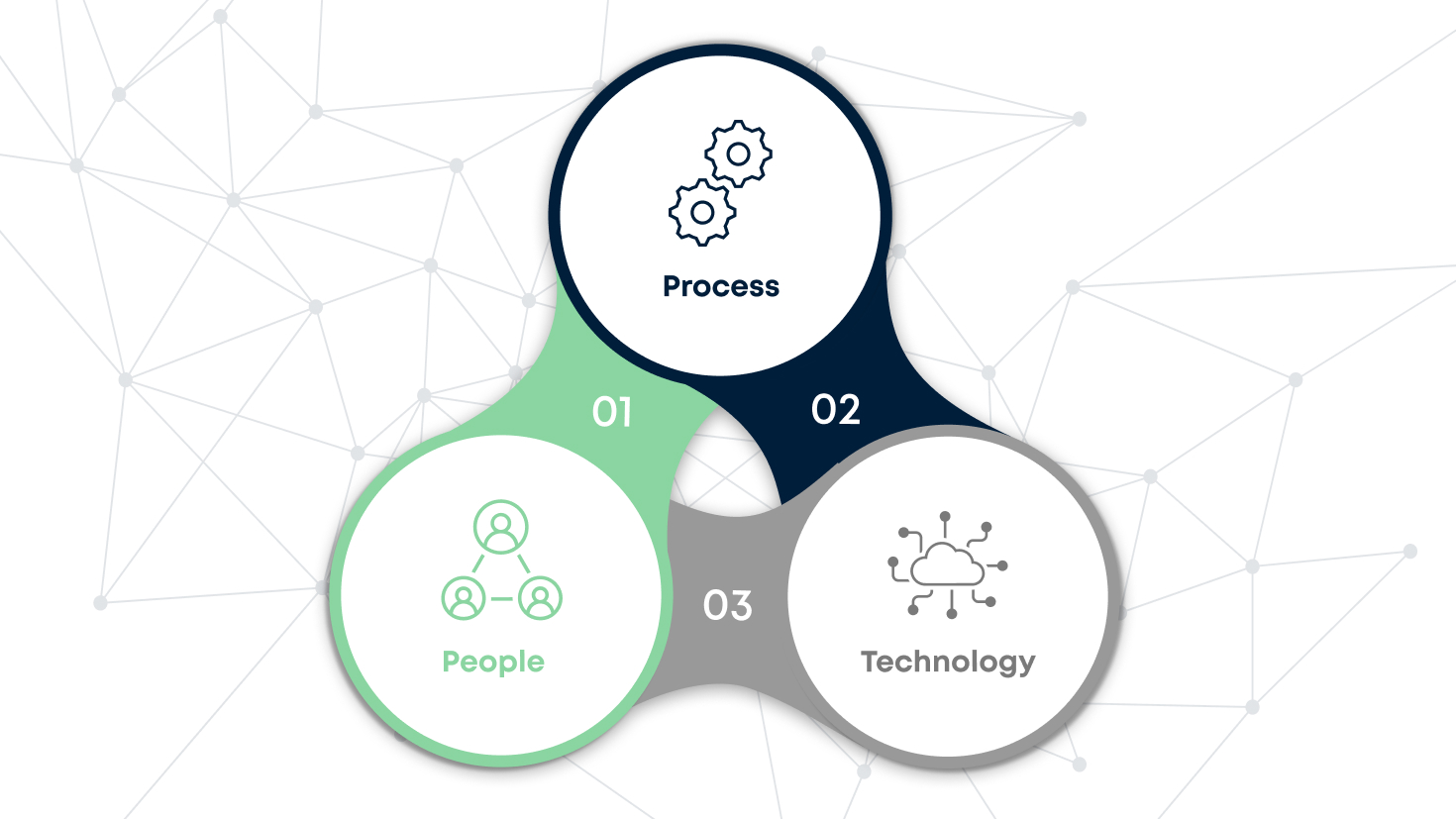In constantly evolving operating environments – both internal and external – leaders are regularly faced with challenges requiring new and emerging technical solutions. From automating workflows to gathering intelligence across more complex data sources, software solutions offer scalability and the opportunity to embed standard processes in more efficient ways.
In investing, however, lies a critical decision: is it better to develop an in-house solution tailored to a team’s specific needs, or opt for a ready-made platform to enable quick deployment and lower maintenance complexity? This “build vs. buy” dilemma is not just about weighing immediate costs and benefits; it’s about aligning your software strategy with your long-term business goals.
With the right internal expertise in place, custom software can offer unparalleled flexibility and a competitive edge with unique features designed specifically around core team processes. However, custom development often demands significant resources, time, and funding. On the other hand, off-the-shelf solutions can be implemented quickly but may come with limitations that require greater investment in change management.
Before making any software investment decision, it’s crucial to consider the pros and cons on each side of the equation. Weighing key factors, such as short- and long-term cost, customization requirements, required timeframes, and long-term strategic objectives is essential to making an informed decision that will drive the best results for your teams – and establish a clear business case. Whether you’re navigating your first software investment, or a seasoned expert evaluating your next big move, understanding these dynamics is crucial to driving a successful software integration strategy.

When to Reinvent the Wheel – and when to Install It
Let’s first look at the “buy” side of things.
When considering solution features and fit, with the multitude of options available in the market, you’re likely to find an off-the-shelf solution that fits your needs quite closely. It’s important to note however that this usually applies only when your problem statement can be met by a tool or set of tools – rather than requiring heavy customization to underpin core business processes. That said, with off-the-shelf solutions, most business challenges can be met with one or more potential software providers, making finding a solution an open playing field.
Off-the-shelf solutions shine when it comes to implementation and deployment. Since the solution has already been developed, integration can be as simple as signing up and starting to use new features straight away.
For more complex solutions integration projects are often required, involving a period of change management, custom integration and onboarding for new users. Don’t let that put you off, however – any effective software provider should come with proven experience on best practice to guide your implementation journey. Providers should come with the clear aim to set you up for success and ensure that you and your team can confidently use the software you purchased. On top of this, you will get a proven, solid foundation for your processes with IT maintenance, support, and future updates included.
Depending on the business challenge, a ready-made tool is also far more likely to be cost-effective than a built solution, as the development and maintenance cost is spread out across other users. However, if your provider doesn’t offer flexibility, you could still be paying for features you don’t fully use for some time – meaning that a clear framework on use and process management still needs to be in place (Read More: Prioritizing the Human Element: People Process Technology).
In addition, if you don’t have a strong partnership with your software provider, dependence is also a critical consideration – as it can be difficult to switch solution once you build processes around a specific tool or set of tools. Which brings us to…
Crafting the Perfect Fit In-House
If you’re looking for software meeting highly specific needs, especially across processes integral to the core of your business, a tailor-made solution might be the preferred answer.
Fitting what perfectly meets your needs is the biggest advantage of creating a software solution from scratch. Just like a custom-tailored suit, with the right expertise available, software built specifically for your business can be designed to meet your exact requirements, incorporating every specific feature and functionality you need. This means no compromises on essential capabilities, no unnecessary features which may interrupt your teams’ workflows, and complete alignment with business processes. With custom software, you can address specific challenges unique to your organization, which can support more effective outcomes in the integral areas of your business that require tailored solutions. Unlike off-the-shelf options, which may require you to change the way you work to fit the software, building from scratch also gives you full control over the design, user experience, and future development – ensuring it perfectly suits your goals.
However, pursuing in-house solutions has downsides. Development projects require greater cross-functional buy-in and well-resourced internal development teams. On top of the challenge of securing necessary support, custom development processes demand substantial time, effort, and resources. You’ll need more than just a team of developers; effective solutions require UI/UX designers to create an intuitive user experience, product managers to align software with business objectives, testers to ensure quality and reliability, and an engineering team that deeply understands the project’s core requirements. Coordinating these diverse roles and managing the development lifecycle can be challenging, often leading to extended timelines and higher costs.
Speaking of costs specifically: it’s important to remember that ongoing maintenance and support will be necessary even after the solution is deployed to keep processes running smoothly. Software is rarely perfect at launch, which means you’re often dealing with an unfinished product that requires continuous attention. This includes fixing bugs that arise, updating outdated components, and making constant improvements to enhance performance and security. These ongoing efforts can be resource-intensive and costly, requiring a dedicated team to monitor, troubleshoot, and refine the software as your business needs evolve and new challenges emerge.
Lastly, it’s important to note that due to the long development time, building custom software can be a risky endeavor. While your team is busy developing and testing a custom solution, the business landscape can change dramatically, altering the organization’s needs to the point where the solution is no longer relevant or necessary. This can lead to a situation where you’ve invested significant resources into a project that no longer delivers value.
However, while lengthy development timelines can strain resources – with the right resources in place, the upsides remain. A custom solution can help you differentiate your business and drive competitive advantage.
Weighing the Pros and Cons
So how do you go about deciding on the best way forward?
- Start by assessing your core business needs: Clearly define the outcomes sought against your business operations, the processes a solution will underpin, and where software integration will maximize value to your teams’ activities as an enabling tool.
- Consult your internal and external partners: Is there software already out there that meets your needs, and do you have the available expertise in house to develop, test and maintain a custom solution?
- Assess the timeline for your business case: Can you afford a longer development timeline, or do you need an immediate solution to drive efficiency and plug process gaps?
- Invest in a long-term business plan: Consider the long-term outlook of your team’s requirements, as use cases and organizations always evolve over time. Fully assess the long-term advantages and risks of either solution – and seek feedback from trusted partners to validate your conclusions.
Answering these four questions as soon as possible in your software journey will help you clearly weigh (and communicate) the pros and cons of each option, and make an effective decision aligned to the wider organizations strategic goals.
Interested in Learning More About Human Risks?
Human Risks provides best practice security risk management software specifically designed for Security and Resilience Leaders working across large operating footprints – to enable security teams and reinforce operational resilience.
Our mission is to make security risk management smarter: partnering with each of our customers to drive best practice and continue evolving together.
Interested in learning more? Reach out to the team for a demo – and subscribe to keep up to date with our development pipeline.



